Manila was the second-most destroyed city (after Warsaw) in the second world war. During the war it had been conquered and occupied by Japanese forces, and in 1945 was 'liberated' by US and allied forces through comprehensive bombing and destruction. It is estimated that around 100,000 Filipino civilians died in this intense period of confrontation.
Intramuros, like most of the older areas of Manila, was devastated during this period, with little evidence remaining of its grand (though deeply inequitable) past. Miraculously (a word that's always used in this context) the church of San Agustin was the only building left intact after the bombing, and there are some remnants of the metres thick walls that gave their name to the area.
I always try to visit Intramuros when I go to Manila. Though getting there through the mad chaos of Filipino traffic is always an ordeal, once you arrive there is always a sense of sanctuary.

Restored houses, General Luna Street, Intramuros
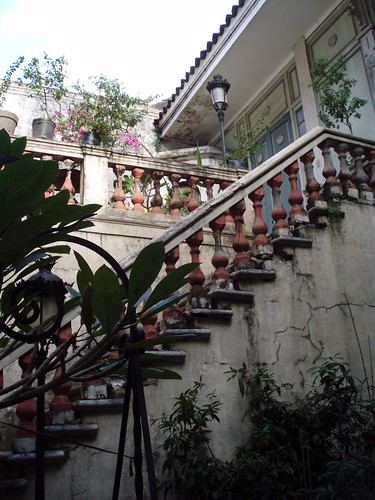
Courtyard, Intramuros
More than anywhere else in Manila, Intramuros has historical sites that I think would be of interest to tourists, but tourists to the Philippines are sadly few. On my most recent visit, the main occupants of the area were members of wedding parties, literally queuing for their turns at the altar of San Agustin. December is THE month for weddings in the Philippines - the rainy season has usually finished, it's not yet too hot, and many relatives are already visiting for the Christmas season.
San Agustin was built in the late sixteenth century and is said to be the oldest church in the Philippines. As well as surviving the bombing of the second world war it has withstood many major earthquakes, so its survival is indeed amazing, if not quite miraculous.

San Agustin Church
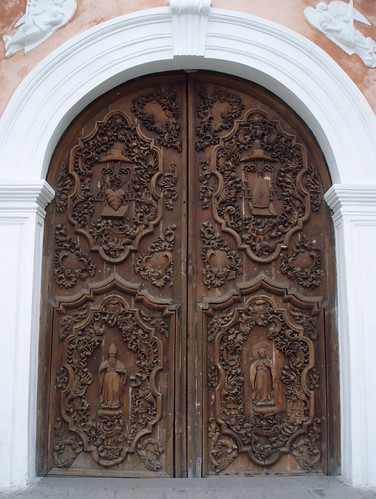
Main door, San Agustin
While the main church of San Agustin is buzzing with activity, it has a secluded crypt where the remains (bones? ashes?) of my erstwile husband's grandparents and great-aunt are kept - among many others. It also has a quiet, rather moldering colonnaded museum set within the neighbouring Augustinian monastery and a beautiful garden much in demand for grand receptions associated with the weddings.
But my main purpose in visiting Intramuros has little to do with San Agustin or the other sites of interest, such as Fort Santiago (where generations over centuries of rulers and prisoners resided - 'native' Filipinos, Spaniards, Americans, Japanese), or the museum commemorating Jose Rizal, poet, novelist, and executed hero of the doomed Philippine revolution. My main purpose is to visit Silahis, one of my favorite shops ever.
I've been visiting Silahis for many years - 20? 25? I think it's the last reasonably extensive source of traditional, good quality Philippine crafts. Its owner is aging, and I'm sure he can't make much money from the enterprise, as it's almost always deserted when I visit. Silahis has four floors of beautiful baskets and other woven objects, wood carvings, furniture, paintings, books, and (my passion) textiles.
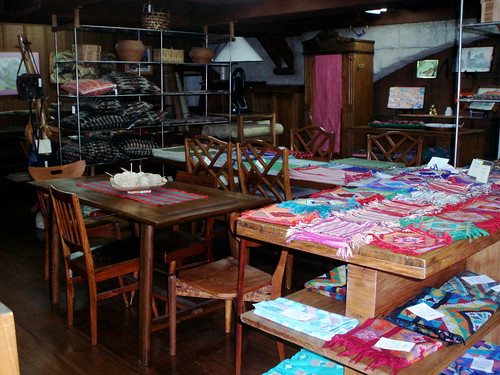
Each visit is, however, increasingly tinged with sadness as the quality and variety of the crafts diminishes each time. Actually, I'm not sure that what I've written is quite true - what is really changing is that the crafts no longer represent in a traditional sense the diversity of the cultural groups within the Philippines, each with their distinctive cultural productions.
This is particularly true of the textiles where there are now few weaving traditions represented. Both the textiles below come from the southern Muslim areas of the Philippines, which is one of the few areas still regularly producing hand-weaving. As for so many other regions of the world, the prices of raw materials are so high, and the return for the labour of hand-crafting so minimal, that only the most disadvantaged groups continue to engage in such time-consuming activities as weaving.
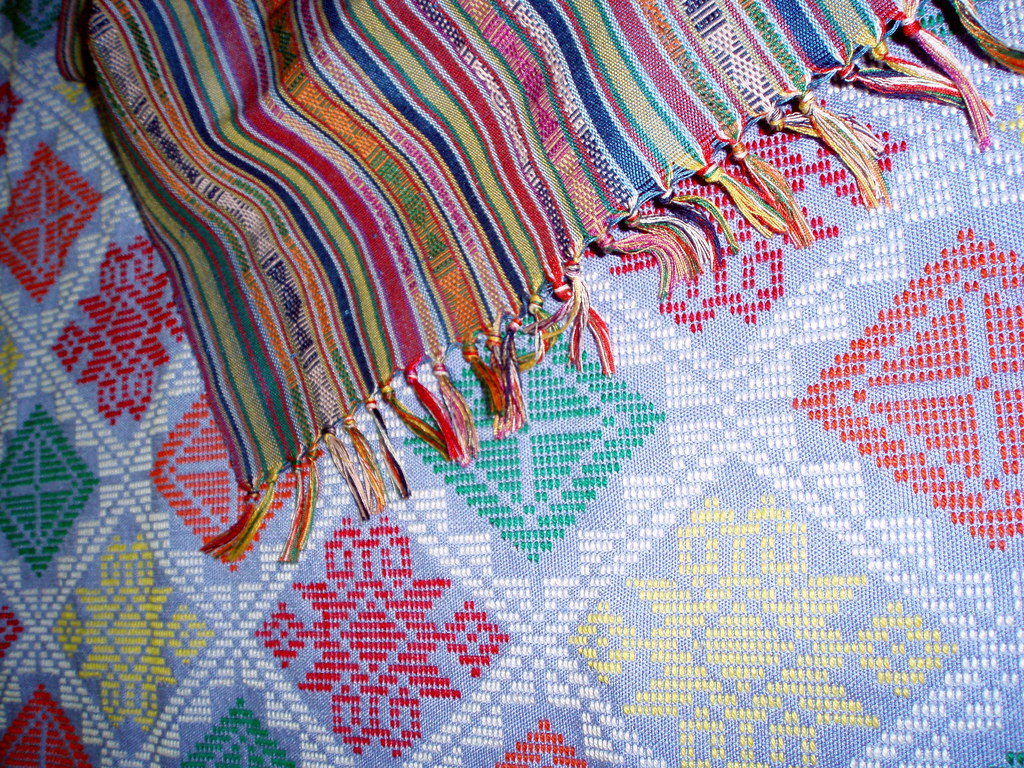
Every time I visit I feel compelled to buy something, as I absurdly think that my meagre purchases might encourage continued production.
Manila is a sprawling, bustling, busy, dirty, polluted city with a population of around 14 million people. When you visit you experience it primarily as a modern Southeast Asian city. Beyond that, you are much more immediately conscious of the inheritance of its 45 years of US colonisation, rather than the centuries of Spanish rule, or the diversity of its pre-colonial inhabitants. More than most other places, for me Intramuros has a sense of the many, diverse and often tragic past experiences of its people.
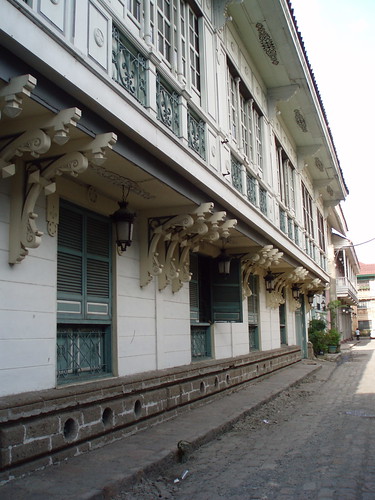
1 comment:
I don't recall which craft outlets we visited, but your descriptions of architecture, provincial art and social changes within the region resonated so warmly with my memories of our time in Manila. What a treat!
Post a Comment